When Manitou launched its impressively high-performing Mezzer fork last year, which we loved, it also released a new rear shock called the Mara, aimed squarely at enduro and gravity-fed riders.
The rear shock market is dominated by the two main suspension brands – Fox and RockShox – with the go-to options being the RockShox Monarch Plus and Super Deluxe, and Fox DPX2 and X2 shocks.
So has Manitou managed to develop the Mara with the same attention to detail, tuneability and performance as its Mezzer? I bolted one to my Orange Stage 6 long-term test bike to find out.
- How to set up your mountain bike suspension: video guides to help you get the most from your bike
- EXT Storia LOK V3 shock review
- Best mountain bike rear shocks
Manitou Mara Pro rear shock details and specifications
Like many other rear shocks, the Mara has externally-adjustable high- and low-speed compression, low-speed rebound and a climb lever with two positions: 'party' for the open mode and 'work' for climbing.
The shock is air-sprung and the positive air chamber – that dictates how hard a shock is to compress – is filled using a Schrader valve.
Most air shocks use a negative air spring, too. This is designed to ease the shock into the beginning of its stroke and can help make a shock feel more supple and easier to compress. This can translate in to better suspension compliance on the trail.
There are two common types of negative air spring. The most common is an automatically-equalising system that, as the shock is compressed to a set point, air from the positive spring chamber passes through a valve, equalising the negative air chamber's pressure with the same pressure as the positive chamber.
The second, less common system, is a manually-filled negative air chamber. Like positive air spring chambers, there’ll be a valve on the outside of the fork or shock that can be connected to a pump to inflate the spring to the desired amount.
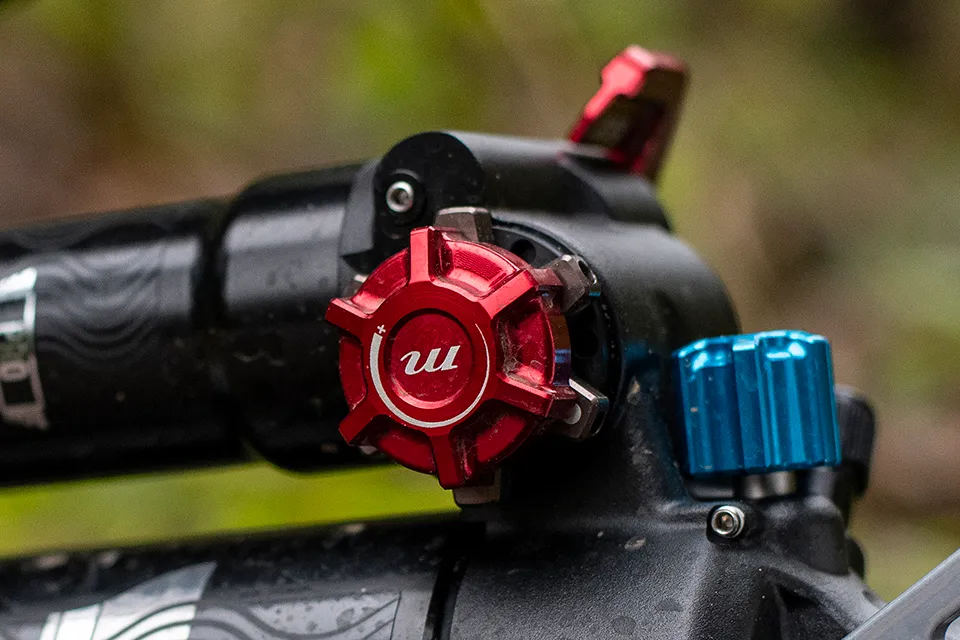
Generally speaking, the higher the air volume or pressure in the negative air spring in relation to the positive chamber, the more supple a fork or shock will feel because the negative chamber is effectively ‘sucking’ the fork or shock into its travel.
Unlike these traditional systems, the Mara’s negative air spring isn’t filled using a shock pump and doesn’t equalise its pressure automatically with the positive chamber. Instead, the negative chamber is filled when the air sleeve is fitted to the shock’s body and its air pressure is fixed.
There are three air can sizes available, and the mid-sized can was fitted to the shock as standard. Manitou claims its shock works best with the largest air can fitted but the mid-volume air can covers 99 per cent of rider needs.
Volume spacers can be fitted to increase ramp up towards the end of its stroke.
It’s got custom-tuneable shim stacks and, according to Manitou, each stack works independently. The main piston compression stack sets the minimum amount of compression damping and the basic shape of the compression curve. The high-speed compression shim stack means the shock’s compression can be tuned beyond the basic compression curve.
The rebound stack dictates the amount of rebound damping on offer and the platform shim stack sets the amount of force required to blow off the shock when it’s set in 'work' mode.
Manitou says that pre-assembled alternative shim stacks will be available to buy so you can tune your shock more easily.
The shock uses a hybrid internal floating piston (IFP) made with a flexible rubber membrane in the centre that separates nitrogen gas and the oil in the piggyback reservoir.
This, according to Manitou, can flex without the entire piston moving, which should help improve small bump sensitivity because the entire IFP doesn’t need to move for the shock to activate.
It’s available in a variety of sizes: three standard eyelet sizes; six metric sizes; and six metric trunnion lengths.
Manitou Mara Pro rear shock setup
I bolted the shock to my Orange Stage 6 long-term test bike which is normally fitted with a RockShox Monarch Plus.
Initial set up was straightforward, following Manitou’s guide. I put in 140psi for my 73kg weight and fairly aggressive riding style, added four clicks out of a possible 24 of low-speed compression from fully open, and one click of high-speed compression damping from fully open. Rebound was set to feel.
Manitou Mara rear shock performance
Compressing the shock for the first time revealed it required a higher than expected amount of force to enter the initial part of its travel.
However, deeper into the stroke the shock felt good, absorbing high-speed hits well without spiking and controlling low-speed undulations and compressions coherently, ramping up well towards the end of its stroke.
The low-speed compression damping felt controlled and gave a fair amount of support. I increased the low-speed compression by another three clicks during the first ride.
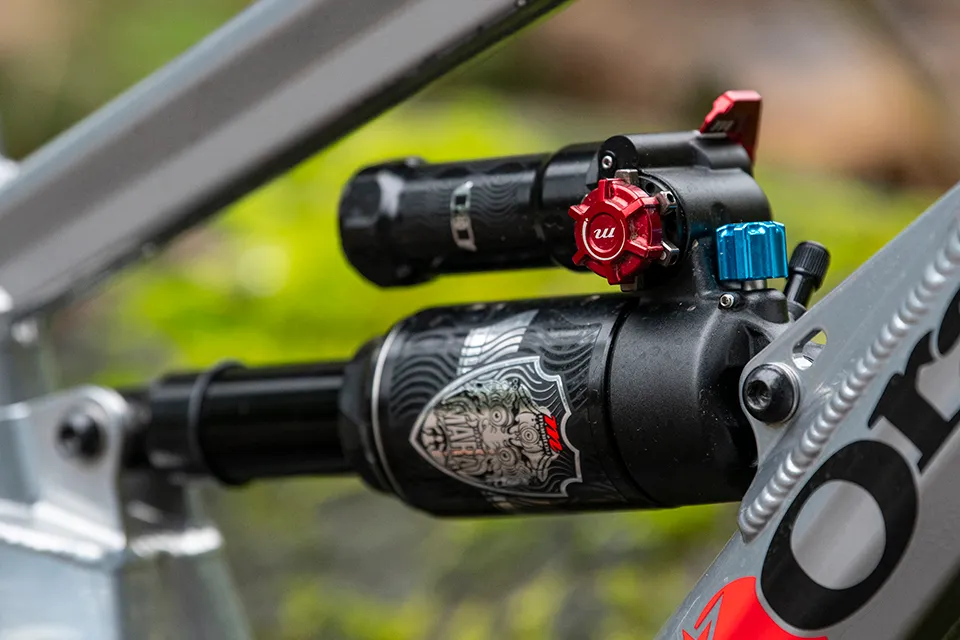
To begin with, I felt like the high-speed compression damping was causing a harshness at the start of its stroke. This was most obvious on steeper sections where my weight was naturally pushed towards the front of the bike or when I was on the brakes where the same weight shift happens.
To counter this, I decreased the high-speed compression by one click to fully open. However, further into the testing process I discovered this was related to the negative spring rather than the high-speed compression damping.
Its in-travel compliance felt like it could be down to the flexible IFP, letting the shock flutter over bumps to give supple-feeling mid-travel bump-absorption.
In berms and compressions, the shock didn’t feel too soft or wallow around, instead it provided a solid platform to push against.
After a fair amount of time testing the shock, the balance between spring rate for initial stroke breakaway, deep-travel support and low-speed compression control proved very hard to find. I ended up trying lower shock pressures (around 130psi), but with maximum low-speed compression to provide the lost support with the reduction in spring rate.
When any range of damping adjustment is maxed out, it’s going to have an effect on the other settings. When the shock was set like this I felt the high-speed compression was compromised – despite being fully open.
It also felt like I couldn’t tune in enough low-speed compression damping to keep it propped up and supportive in compressions, while having a low-enough spring rate so that the initial resistance to compress was mitigated.
I speculate that the need for this compromise was caused by the negative air spring not being big enough or having enough pressure to encourage the shock to compress. Bigger or tuneable negative air springs, such as RockShox’ MegNeg air can, help to reduce these feelings.
Manitou has identified the need for an adjustable negative air spring with its Mezzer fork – the negative air spring equalises pressure with the positive chamber automatically.
This begs the question: why doesn't Manitou think a rear shock needs the same technology as the Mezzer, given most manufacturers have an automatically-equalising negative chamber?
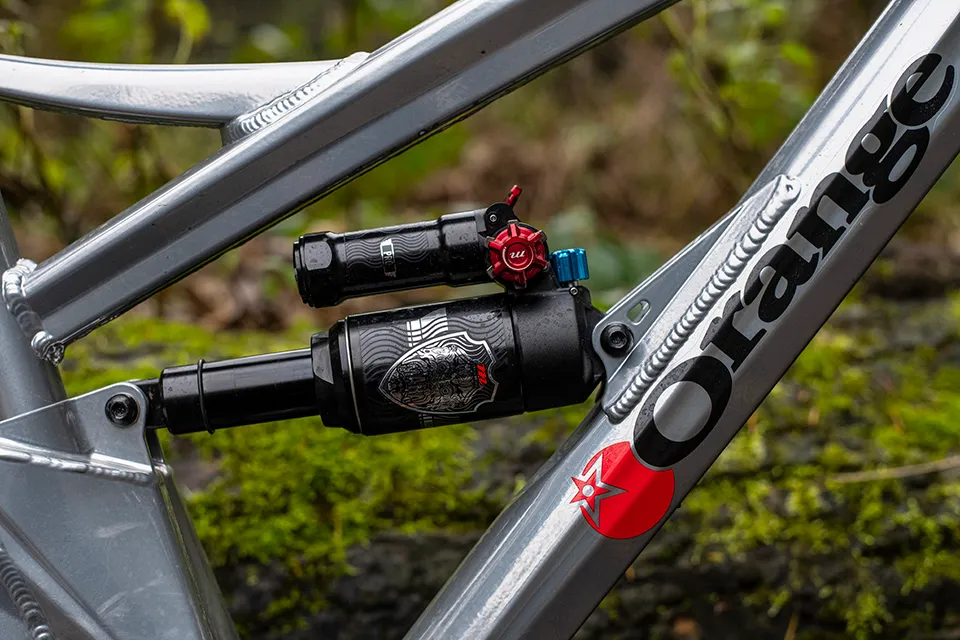
After yet more testing I settled on 155psi and reduced the low-speed compression damping from fully on to -5 clicks with no high-speed compression damping at all. I felt like this provided the best compromise between initial harshness, resistance and support.
Overall, the shock certainly gave the ride a Bambi-on-ice feeling because it was reluctant to compress into the initial part of its travel.
This was especially marked on terrain where grip and predictable control was essential, such as bumpy cambers or root sections, and had me second-guessing where my grip was going to come from.
With these settings, the shock’s reluctance to compress was less obvious deeper into its travel, where it handled bumps well and I never felt there was any compression spike. The beginning stroke's reluctance to compress really overshadowed the rest of the shock’s performance.
The climb lever worked well, stopping pretty much all unwanted shock movement. The blow-off in lock mode meant that it absorbed bigger, harsher hits, but for maximum climbing comfort I left the lever in the open mode.
However, because the shock was fairly reluctant to enter its initial stroke, pedal-induced bob wasn’t really an issue and I only used the climb lever to test whether it worked.
Despite the shock having a host of external adjustability and tuneable and replaceable shim stacks, none of this, I felt, could overcome the problem of having a negative air spring not adequately pressurised or sized for the positive air spring.
Testing a second Mara Pro shock
I got in touch with Manitou to present my findings about the shock feeling harsh and reluctant to compress at the start of its travel, and it provided me with a second shock to test to see if my initial unit was faulty.
The new shock was fitted with a volume reducer spacer to help increase bottom-out resistance and it also had a slightly more aggressive lockout function.
I tested the new shock on the same bike and same trails in similar conditions as the first test.
My findings revealed that while it had more bottom-out resistance, I didn’t feel like I could run significantly lower positive air spring pressures and settled on 150psi, just 5psi lower than the shock without the bottom-out spacer.
The shock did feel marginally smoother at the start of its travel and was slightly more willing to compress than the first test sample. The difference wasn’t especially marked, though, and it certainly felt like my initial findings still applied to the second shock.
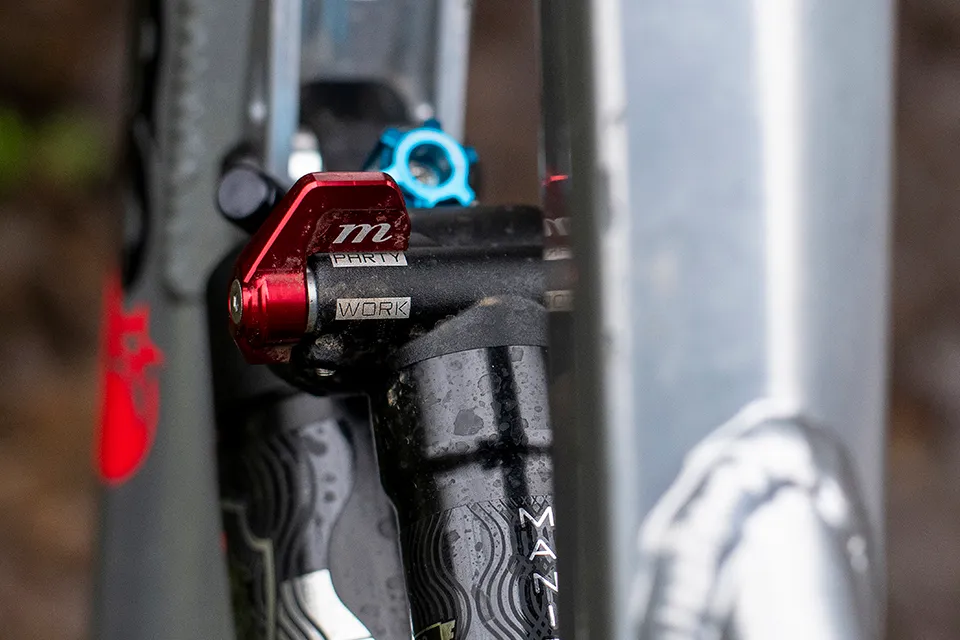
Manitou explained to me why it uses this type of air spring, saying that without a self-equalising negative air chamber the shock requires less setup pressure to give the same levels of mid-stroke support.
This makes the set-up process quicker and reduces loads on the seals, giving longer service intervals and lower seal friction.
Its system also claims to have a smoother, more predictable action around the sag point after the first few millimetres of shaft are compressed.
Manitou says that other designs have a dead point in the spring curve as the shock compresses over the negative spring equalising port, creating a portion of travel with less spring support. This was its main reason for using the system in the Mara.
The final reason was that because its design has a higher initial spring rate at the start of its stroke, it will provide immediate support and feedback when the shock is moving from full extension to its sag point.
Although it does admit that a disadvantage of this can be a reduction in shock sensitivity.
Manitou Mara rear shock bottom line
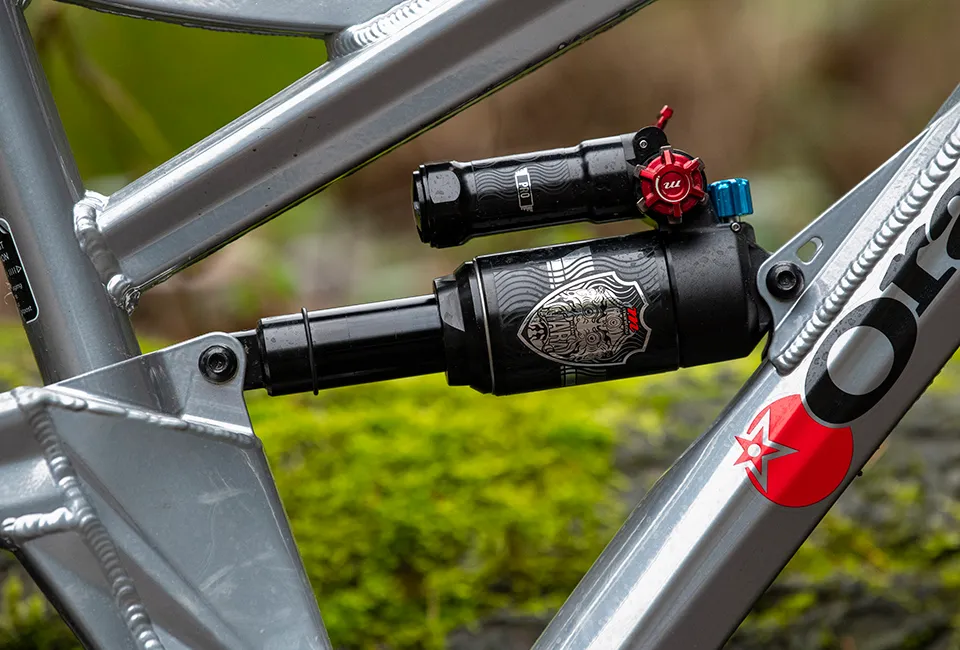
Disappointingly, the Mara isn’t as good as the Mezzer fork. I think this is mostly down to the negative air spring not equalising with the positive spring or having its own, dedicated adjustment.
It lacks initial stroke suppleness, but this does become less of a problem as it compresses deeper into the travel.
Although the Mara offers plenty of useable damping adjustment and a solid climb lever function, it just doesn’t perform as well as Fox’s DPX2 or X2, or RockShox’ Monarch Plus or Super Deluxe.
Product
| Brand | Manitou |
| Price | €610.00, £499.99, $579.99 |
| Weight | 539g |
| br_whatWeTested | Manitou Mara Pro |
Features
| Spring type | air |
